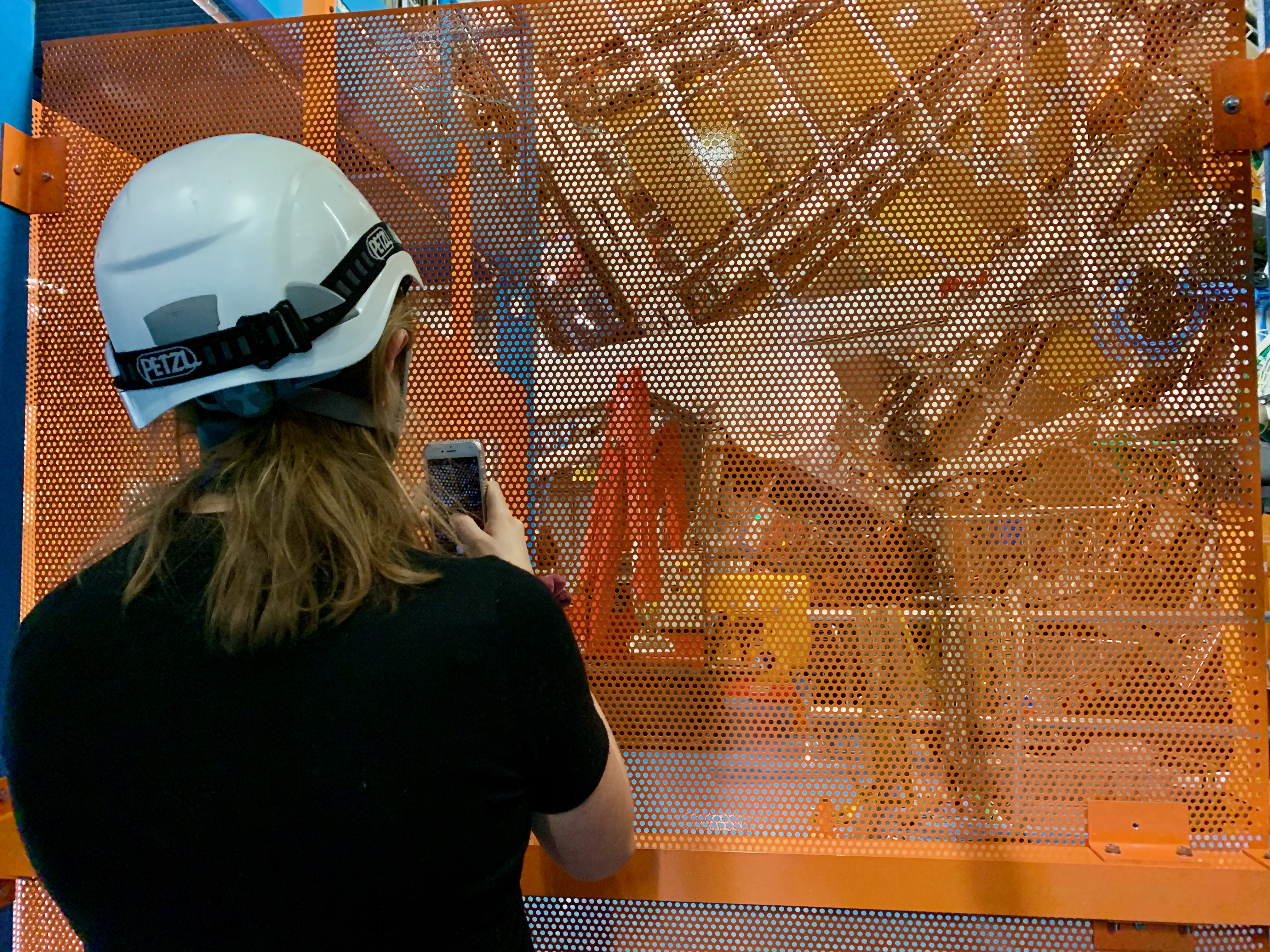Progress on Toroid Magnets
10 December 2007 | By

The magnets on either end of the ATLAS detector (called end–cap toroid magnets) dominated November’s work in the experimental cavern. The ATLAS magnet team took a significant step towards finishing work on the ATLAS detector as testing of the magnets began.
These two magnets are part of a system of magnets that bend charged particles so physicists can measure their momenta. The other parts are the eight toroid magnets that dominate the central image of ATLAS and the solenoid magnet that encloses the inner detector.
It wasn't all good news, as on 22 November, the magnet on Side C (Jura side) moved slightly during the testing process, slightly damaging the pipe that feeds the calorimeter with argon, according to an investigation described at the bottom. The central toroid magnets were tested under optimal conditions in November of last year.


All the toroid magnets are superconducting in order to allow a large magnetic field without too much particle–stopping mass or wallet–busting energy consumption. To achieve superconductivity, each magnet needs to be cooled to a freezing -269°C, just 4.2 degrees above absolute zero (using liquid helium). Each needs to be maintained in a good vacuum for optimal working conditions. The main parts of the magnet are called the "cold mass" and weigh about 120 tonnes, and are about 10m across. The large magnetic forces (many hundreds of tonnes) acting, mean that careful design and analysis are required to ensure that fractures do not occur when the magnet is turned on.
"It is the last magnet being tested on ATLAS before nominal operation, so this is a major milestone," says Arnaud Foussat, one of CERN’s magnet engineers. The end–cap toroid magnets were installed in the experimental cavern in the summer of 2007. The ATLAS engineers worked hard during October to cool the magnets to -269°C. The cooling process took five weeks because the magnets are so large.
Now that the magnets are at optimal working conditions, testing has begun. "We had to make sure that all the instrumentation and magnet safety systems were operational before the power test," says Foussat. Up to 200 Megajoules of energy is stored in each magnet — equivalent to 40 kg of TNT — and there are safety systems to help dissipate that energy away from the magnet in case a hotspot appears somewhere within the coil system. In the middle of November, the ATLAS magnet team fed a current of 4 kiloamperes through one magnet, and they planned to gradually ramp up the current to the nominal value of 21 kiloamperes.
Forces
"We expect large attraction forces between the two. We have to monitor those forces and make sure they are uniform so that there is no potential damage to the structure," says Foussat. On 22 November it became clear just how strong those forces could be. During testing, the magnet was not sufficiently braced, and moved several centimetres before being stopped by the end–cap calorimeter, which was not significantly damaged during the incident.
Marzio Nessi, the Technical Coordinator for ATLAS summarized the situation: "This test is not done in a standard ATLAS configuration but in a configuration that brings the end–cap magnet 35 cm closer to the calorimeter end–cap than normal position. Care was taken to ensure there was enough safety margin for this operation. Unexpectedly, at 14.7 kAmp, the end–cap toroid magnet moved toward the calorimeter by about 8 cm. Immediately, all activities were stopped, and the current was released. All means were put in place to visually inspect the Liquid Argon Calorimeter End-Cap services for possible damage. The ATLAS safety management team brought in all experts and the fire brigade with safety equipment just in case liquid argon would spill out.
In the following days, the toroid magnet was moved back by about one meter and we inspected again for possible damage. No damage was found to the electronic connections or other services, except for the liquid argon exhaust line, the so–called cryoline. This line consists of a warm (outer) and a cold section (the inner part). Only the warm section was damaged. This week, we are starting repair. This will cause minimal perturbation to the normal schedule for a few days.
By now, the tests of the end–cap toroid magnets are completed. They will resume when the entire ATLAS detector is in its final closed configuration around April 2008. At least this test has proven that the end–cap toroid magnets were working correctly and their infrastructure behaved as expected."



